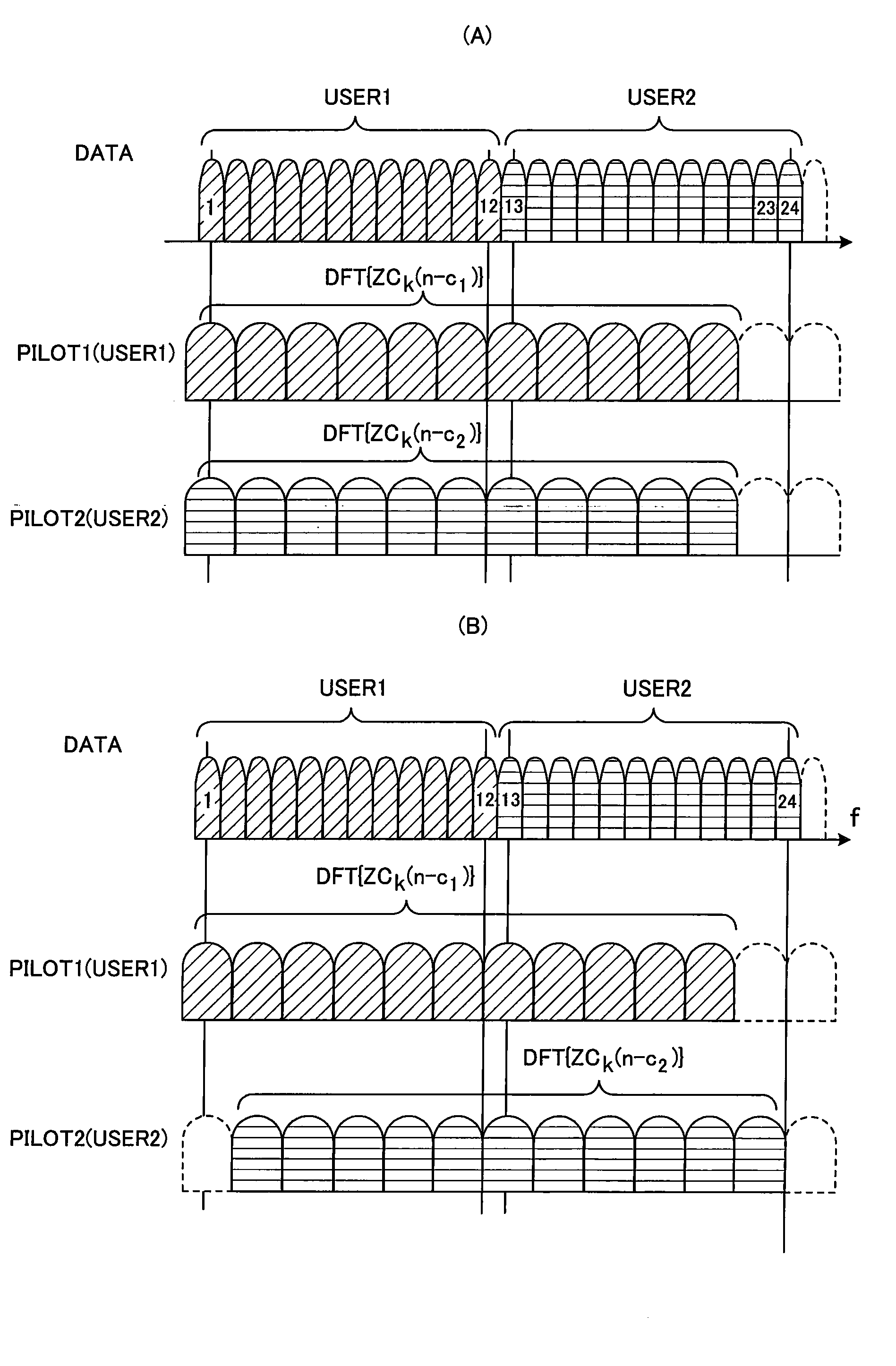Radio communication method and a base station and user terminal thereof
a radio communication and user terminal technology, applied in the field of radio communication methods and a base station and user terminal thereof, can solve the problems of short sequence number, interference between adjacent cells, and decrease of severe interference, and achieve accurate channel estimation
- Summary
- Abstract
- Description
- Claims
- Application Information
AI Technical Summary
Benefits of technology
Problems solved by technology
Method used
Image
Examples
Embodiment Construction
(A) Principles of the Invention
[0066]As shown in (A) of FIG. 1, when a CAZAC sequence ZCk(n) to which a cyclic shift c1 has been performed is used as the pilot for a user 1, and a CAZAC sequence ZCk(n) to which a cyclic shift c2 has been performed is used as the pilot for a user 2, then as was explained using FIG. 28, the subcarriers 23, 24 of the transmission frequency band for data of user 2 deviates from the transmission frequency band for the pilot, and the channel estimation accuracy for that subcarrier decreases. In FIG. 1, DFT{ZCk(n−c1)} and DFT{ZCk(n−c2)} are the pilots that are obtained by performing cyclic shifts c1, c2 of a CAZAC sequence ZCk(n) having a length L=11, after which DFT processing is performed on the sequences ZCk(n−c1) and ZCk(n−c2).
[0067]Therefore, as shown in (B) of FIG. 1, by giving a frequency offset, to the pilots of each user to correspond to the transmission band and then multiplexing the pilots, the transmission band for the pilots will always cover ...
PUM
 Login to View More
Login to View More Abstract
Description
Claims
Application Information
 Login to View More
Login to View More - R&D
- Intellectual Property
- Life Sciences
- Materials
- Tech Scout
- Unparalleled Data Quality
- Higher Quality Content
- 60% Fewer Hallucinations
Browse by: Latest US Patents, China's latest patents, Technical Efficacy Thesaurus, Application Domain, Technology Topic, Popular Technical Reports.
© 2025 PatSnap. All rights reserved.Legal|Privacy policy|Modern Slavery Act Transparency Statement|Sitemap|About US| Contact US: help@patsnap.com



